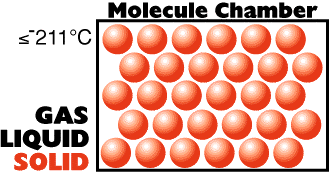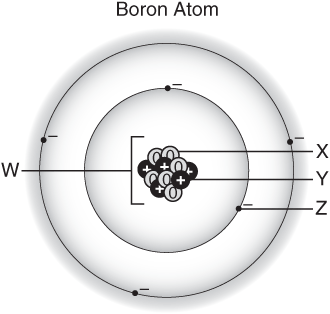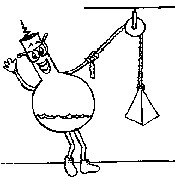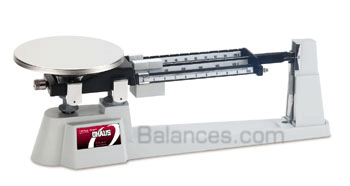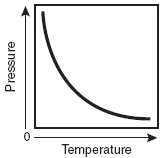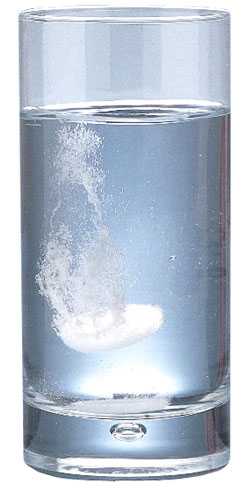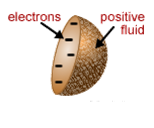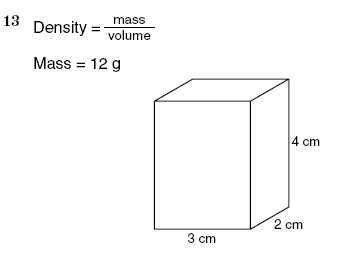Science 8: Benchmark I: Part 2 (40)

The review is to be used totally for educational purposes. It assists in a comprehesive review for the first nine weeks of instruction.
- 1.
What are the "bits of information" gathered with your five senses?
- A.
Data
- B.
Observation
- C.
Hypothesis
- D.
Conclusion
Correct Answer
B. ObservationExplanation
Observation refers to the bits of information that are gathered through the five senses. When we observe something, we use our senses of sight, hearing, taste, touch, and smell to gather information about the world around us. This information is then processed by our brain, allowing us to make sense of our surroundings and form a better understanding of the objects, events, or phenomena we are observing. Observation is a fundamental process in gathering data and forming hypotheses or conclusions based on the information obtained through our senses.Rate this question:
-
- 2.
What states that all matter consists of very "small particles" that are in a constant state of "motion"? SOLID GAS LIQUID
- A.
Conservation of Matter
- B.
Particle (Kinetic) Theory of Matter
- C.
Nucleus
- D.
Electron cloud model
Correct Answer
B. Particle (Kinetic) Theory of MatterExplanation
The Particle (Kinetic) Theory of Matter states that all matter consists of very "small particles" that are in a constant state of "motion". This theory explains that particles in solid, liquid, and gas states are constantly moving and vibrating at different rates. It also explains the behavior of matter in terms of temperature, pressure, and volume. This theory is widely accepted and helps us understand the physical properties and behavior of matter.Rate this question:
-
- 3.
Who said atoms are indivisible, indestructible, and looks looks like a "solid ball"?
- A.
Thomson
- B.
Rutherford
- C.
Dalton
- D.
Bohr
Correct Answer
C. DaltonExplanation
Dalton is the correct answer because he proposed the atomic theory which stated that atoms are indivisible, indestructible, and have a solid ball-like structure. This theory laid the foundation for modern atomic theory and greatly influenced our understanding of the nature of matter.Rate this question:
-
- 4.
What is the "modern" atomic model that is being used "currently" today?
- A.
Thomson's Model
- B.
Dalton's Model
- C.
Rutherford's model
- D.
Electron cloud model
Correct Answer
D. Electron cloud modelExplanation
The electron cloud model is the "modern" atomic model being used "currently" today. This model describes the arrangement of electrons in an atom as a cloud-like region surrounding the nucleus. It suggests that electrons do not follow fixed paths but rather exist in a probabilistic distribution of energy levels. This model is based on the principles of quantum mechanics and provides a more accurate representation of the behavior and properties of atoms compared to previous models proposed by Thomson, Dalton, and Rutherford.Rate this question:
-
- 5.
Which subatomical particles are located in the nucleus of the atom below that are labeled "W"?
- A.
Electron and neutron
- B.
Proton and electron
- C.
Neutron and electron
- D.
Proton and neutron
Correct Answer
D. Proton and neutronExplanation
The subatomic particles located in the nucleus of an atom are protons and neutrons. Protons have a positive charge, while neutrons have no charge. Electrons, on the other hand, are located outside the nucleus in electron shells. Therefore, the correct answer is "proton and neutron".Rate this question:
-
- 6.
Which subatomical particle of an atom has a "negative" charge?
- A.
Proton
- B.
Electron
- C.
Neutron
- D.
Nucleus
Correct Answer
B. ElectronExplanation
The electron is a subatomic particle of an atom that carries a "negative" charge. It orbits around the nucleus of the atom and plays a crucial role in chemical reactions and electricity. Unlike protons and neutrons, which are found in the nucleus and carry positive and neutral charges respectively, electrons are negatively charged and are responsible for the overall charge of an atom.Rate this question:
-
- 7.
What is a group of "two or more atoms (not elements)" held together by very strong chemical bonds? *Do NOT get this mixeded up with 2 or more elements chemically combined.
- A.
Element (this "one" pure substance)
- B.
Compounds (this is when two or more "elements" combine-not two or more "atoms".
- C.
Mixtures (not "chemically" bonded, but can be separated easily)
- D.
Molecules (two "atoms" bonded)
Correct Answer
D. Molecules (two "atoms" bonded)Explanation
A group of "two or more atoms (not elements)" held together by very strong chemical bonds is called molecules. Molecules are formed when two or more atoms bond together. This is different from compounds, which involve the combination of two or more elements, and mixtures, which are not chemically bonded and can be easily separated.Rate this question:
-
- 8.
What forms when substances are combined in a physical way, but the substances do not change or combine chemically?
- A.
Compounds
- B.
Mixtures
- C.
Element
- D.
Molecules
Correct Answer
B. MixturesExplanation
When substances are combined in a physical way, but they do not undergo any chemical reactions or bonding, a mixture is formed. In a mixture, the substances retain their individual properties and can be separated by physical means. This is different from compounds, where substances chemically combine to form new substances with different properties. Elements are pure substances that cannot be broken down into simpler substances, and molecules are the smallest units of compounds. Thus, mixtures are the correct answer in this case.Rate this question:
-
- 9.
What type of change includes these properites such as boiling point, melting point, size, shape, color, odor, density (heaviness), and solubility (dissolving)?
- A.
Chemical properties
- B.
Physical properties
- C.
Observation
- D.
State properties
Correct Answer
B. Physical propertiesExplanation
Physical properties are characteristics of a substance that can be observed or measured without changing the chemical composition of the substance. These properties include boiling point, melting point, size, shape, color, odor, density, and solubility. They help to identify and classify substances based on their physical characteristics. Chemical properties, on the other hand, describe how a substance interacts with other substances and involve changes in the chemical composition of the substance. Observation and state properties are not comprehensive enough to include all the listed properties.Rate this question:
-
- 10.
What is the "change" that involes "properties" such as reactivity (combining elements together), oxidation (rusting), combustibility (catching on fire quickly), acidity (0-6 pH), or basicity (pH 8-14)?
- A.
Physical change
- B.
Chemical change
- C.
Mental change
- D.
Developmental change
Correct Answer
B. Chemical changeExplanation
A chemical change refers to a process in which one or more substances are transformed into new substances with different properties. This change involves properties such as reactivity, oxidation, combustibility, acidity, or basicity. In a chemical change, the composition of the substances involved is altered at the molecular level, resulting in the formation of new compounds or the breaking down of existing compounds. This is different from a physical change, which does not involve a change in the chemical composition of the substances.Rate this question:
-
- 11.
What are the 1- 18 numbered "vertical columns" of elements in the periodic table?
- A.
Group or families
- B.
Period
- C.
Metal
- D.
Nonmetal
Correct Answer
A. Group or familiesExplanation
The 1-18 numbered "vertical columns" in the periodic table are known as groups or families. These groups or families are arranged in a way that elements within the same group have similar properties and characteristics. Each group is labeled with a number and a letter to represent the elements it contains. These groups play a significant role in understanding the periodic trends and chemical behavior of elements.Rate this question:
-
- 12.
What means a material that can be "pounded" into thin sheets?
- A.
Ductile
- B.
Malleable
- C.
Bendable
- D.
Taffy
Correct Answer
B. MalleableExplanation
Malleable means that a material can be easily shaped or molded by hammering or pressing, without breaking or cracking. This property allows the material to be pounded into thin sheets, making it suitable for various applications such as metalworking or jewelry making. Ductile refers to a material's ability to be stretched into a wire, bendable means that a material can be flexed without breaking, and taffy is a type of candy that has a soft and chewy texture.Rate this question:
-
- 13.
What means a material that can be "stretched" into wires?
- A.
Flexible
- B.
Ductile
- C.
Stretch Armstrong
- D.
Work
Correct Answer
B. DuctileExplanation
Ductile means that a material can be "stretched" into wires.Rate this question:
-
- 14.
Which "group" of elements usually are shiny (have luster), are malleable, ductile, and are usually solid at room temperature, and are good conductors of electricity?
- A.
Metalloids
- B.
Rare earth metals
- C.
Metals
- D.
Nonmetals
Correct Answer
C. MetalsExplanation
Metals are usually shiny, malleable, ductile, and solid at room temperature. They also have the ability to conduct electricity well. This set of characteristics is commonly associated with metals, making them the correct answer to the question. Metalloids, rare earth metals, and nonmetals do not possess all of these properties, making them incorrect choices.Rate this question:
-
- 15.
Which "group" and "number" on the periodic table are the least reactive and most stable?
- A.
Transitional metals (3 to 12)
- B.
Alkali metals (1)
- C.
Halogens (17)
- D.
Noble gases (18)
Correct Answer
D. Noble gases (18)Explanation
Noble gases (group 18) on the periodic table are the least reactive and most stable. This is because they have a full outer electron shell, making them very stable and unlikely to react with other elements. Their full outer electron shell gives them little to no tendency to gain, lose, or share electrons, which is why they are non-reactive. This stability makes noble gases useful in various applications, such as in lighting and as inert atmospheres in laboratories.Rate this question:
-
- 16.
Which group of elements is located on the periodic table that is classified by their physical and chemical properties as dull, usually brittle, and poorly conductive of heat and electricity?
- A.
Metals
- B.
Metalloids
- C.
Nonmetals
- D.
Transitional metals
Correct Answer
C. NonmetalsExplanation
Nonmetals are a group of elements located on the periodic table that are classified by their physical and chemical properties as dull, usually brittle, and poorly conductive of heat and electricity. Unlike metals, nonmetals do not have the characteristic luster and are not malleable or ductile. They are usually gases or brittle solids at room temperature and have lower melting and boiling points compared to metals. Nonmetals also tend to have higher electronegativity and gain electrons to form negative ions in chemical reactions.Rate this question:
-
- 17.
Which tool is used to find the "mass" of copper?
- A.
Graduated cylinder
- B.
Triple beam balance
- C.
Thermometer
- D.
Metric ruler
Correct Answer
B. Triple beam balanceExplanation
A triple beam balance is used to find the "mass" of copper. This tool is specifically designed to measure the mass of an object by comparing it to a set of known masses. The triple beam balance consists of three beams, each with a sliding weight. By adjusting the sliding weights on each beam, the user can find the mass of the object being measured. This makes it the ideal tool for accurately determining the mass of copper or any other solid material.Rate this question:
-
- 18.
Which tool is used to find the "volume" of alcohol in science?
- A.
Graduated cylinder
- B.
Triple beam balance
- C.
Metric ruler
- D.
Thermometer
Correct Answer
A. Graduated cylinderExplanation
A graduated cylinder is used to measure the volume of liquids, including alcohol, in science. It is a cylindrical container with markings on the side that indicate the volume of liquid it contains. By pouring the alcohol into the graduated cylinder and reading the measurement at the meniscus, the volume of alcohol can be determined accurately. The other options, such as triple beam balance, metric ruler, and thermometer, are not specifically designed to measure volume and are used for different purposes in science.Rate this question:
-
- 19.
Which tool is used to measure the "length" of a piece of rope?
- A.
Graduated cylinder
- B.
Triple beam balance
- C.
Metric ruler
- D.
Thermometer
Correct Answer
C. Metric rulerExplanation
A metric ruler is used to measure the "length" of a piece of rope. A graduated cylinder is used to measure the volume of liquids, a triple beam balance is used to measure the mass of an object, and a thermometer is used to measure temperature. However, none of these tools are suitable for measuring the length of a rope. Therefore, the correct answer is a metric ruler.Rate this question:
-
- 20.
Which unit of measurement would be used to measure "mass" of a small pill?
- A.
Milliliter
- B.
Milligram
- C.
Ounce
- D.
Kilogram
Correct Answer
B. MilligramExplanation
The unit of measurement used to measure the "mass" of a small pill is milligram. Milligram is a metric unit of mass that is equal to one thousandth of a gram. It is commonly used to measure the mass of small objects or substances, such as pills, that require precise measurements.Rate this question:
-
- 21.
What measurement would be used to measure the "diameter" of a ring finger?
- A.
Millimeter
- B.
Milliliter
- C.
Kilogram
- D.
Meter
Correct Answer
A. MillimeterExplanation
The diameter of a ring finger would be measured in millimeters. Millimeters are a unit of length that is commonly used for small measurements, such as the size of jewelry. It is the most appropriate unit for measuring the diameter of a small object like a finger. Milliliters, kilograms, and meters are units of volume, weight, and length respectively, and would not be suitable for measuring the diameter of a ring finger.Rate this question:
-
- 22.
What units of measurement is "temperature" measured in science?
- A.
Farenheit
- B.
Celsius
- C.
Meters
- D.
Grams
Correct Answer
B. CelsiusExplanation
Temperature is measured in Celsius in science.Rate this question:
-
- 23.
What is the "independent variable" on the graph?Remember: D R Y MIX
- A.
Pressure
- B.
0 degrees
- C.
Temperature
- D.
Curved line
Correct Answer
C. TemperatureExplanation
Remember the "Y Axis is vertical (up and down) = dependent variable. The X axis is horizontal (across)=independent variable.Rate this question:
-
- 24.
Which unit of measurement is used to measure the "diameter" a yo yo?
- A.
Milliliters
- B.
Centimeters
- C.
Kilometers
- D.
Meters
Correct Answer
B. CentimetersExplanation
The unit of measurement used to measure the "diameter" of a yo-yo is centimeters. Diameter is a linear measurement that refers to the distance across a circle passing through its center. Centimeters is a commonly used unit for measuring small lengths, making it appropriate for measuring the diameter of a yo-yo.Rate this question:
-
- 25.
Which of the following is NOT a compound? H2O NaCl C12H22O11 He
- A.
NaCl (salt)
- B.
H2O (water)
- C.
C12H22O11 (sugar)
- D.
He (helium)
Correct Answer
D. He (helium)Explanation
Helium (He) is not a compound because it consists of only one type of atom. Compounds are formed when two or more different elements chemically combine. In contrast, NaCl (salt), H2O (water), and C12H22O11 (sugar) are all compounds because they are made up of multiple elements chemically bonded together.Rate this question:
-
- 26.
Which of the following is an "element"?
- A.
CO
- B.
Cu2
- C.
CaC
- D.
HCl
Correct Answer
B. Cu2Explanation
Cu2 is the correct answer because it represents a chemical element. The symbol "Cu" stands for copper, which is a chemical element with atomic number 29. The subscript "2" indicates that there are two atoms of copper present in the molecule.Rate this question:
-
- 27.
What did Dalton's atomic model look like?
- A.
Blueberry muffin
- B.
Three dimensional with orbits
- C.
Solid ball
- D.
Nucleus in center with cloud around it
Correct Answer
C. Solid ballExplanation
Dalton's atomic model is often described as a solid ball because it proposed that atoms were indivisible and indestructible particles. According to this model, atoms were considered as tiny, dense spheres that could not be divided into smaller parts. This concept was based on the idea that all matter is composed of atoms that are uniform in size and properties. However, it is important to note that Dalton's model was later revised and updated as new scientific discoveries were made.Rate this question:
-
- 28.
Which scientist's atomic model looks like a "three-dimensional model" with "orbits" going around it?
- A.
Dalton
- B.
Bohr
- C.
Rutherford
- D.
Thomson
Correct Answer
B. BohrExplanation
Bohr's atomic model is often depicted as a "three-dimensional model" with "orbits" going around it. In this model, electrons move in specific energy levels or orbits around the nucleus, similar to planets orbiting the sun. This model introduced the concept of quantized energy levels and explained the stability of atoms. It was a significant advancement in understanding atomic structure and laid the foundation for further developments in quantum mechanics.Rate this question:
-
- 29.
Which scientist's atomic model was called the "blueberry muffin or plum pudding" model because he discovered protons and electrons in the atom?
- A.
Thomson
- B.
Bohr
- C.
Rutherford
- D.
Dalton
Correct Answer
A. ThomsonExplanation
J.J. Thomson's atomic model was called the "blueberry muffin or plum pudding" model because he discovered that atoms contain negatively charged electrons embedded in a positively charged "pudding" or "muffin" of matter. This model suggested that the atom is a uniform, positively charged sphere with electrons scattered throughout it. Thomson's discovery of electrons and his model laid the foundation for our understanding of atomic structure.Rate this question:
-
- 30.
If the caboose is 20.7 m in length, how many cm will that be when converted? MUST SHOW WORK ON PAPER TO TURN IN * Ask yourself are you going from: "big to small" units=move decimal right or "small to large" units= move decimal left* Move the decimal the number of times of the zeros in your prefix as centi- means 100=2 zeros.
- A.
207.0
- B.
2.070
- C.
2070 cm
- D.
0.207
Correct Answer
C. 2070 cmExplanation
The unit value you are converting to is "smaller" than the original unit value then a "multiplication" function will be used or Move the decimal to the left the number of zeros in prefix such as centi- is 100 or 2 places for 2 zeros.
If the unit value you are converting to is "larger" than the original unit value then a "division" function will be used.Rate this question:
-
- 31.
If the "tape measure" is pulled out 7cm, how many millimeters will it be after converted? READ BEFORE ANSWERING!!!!!!! CONVERT: 1. 7 cm to ? mL = going from "large to small". 2. This tells you to move decimal to "right (not left). 3. How do you know how many places to move the decimal? 1 time because there 10 mL = 1cm.
- A.
700
- B.
0.7
- C.
70 mm
- D.
7000.0
Correct Answer
C. 70 mmExplanation
Remember there are "10 millimeters" in a "centimeter".Rate this question:
-
- 32.
What smallest part of the atom and is the lightest weight?Hint: The part is located in the "cloud or orbits of the atom".
- A.
Proton
- B.
Neutron
- C.
Electron
Correct Answer
C. ElectronExplanation
The electron is the smallest part of the atom and has the lightest weight. It is located in the "cloud or orbits of the atom". Electrons have a negative charge and are responsible for the chemical behavior of atoms. They are much smaller and lighter than protons and neutrons, which are located in the nucleus of the atom.Rate this question:
-
- 33.
What is the type of "variable" that is the only thing that "changes" in the experiment? Read below: Hypothesis: If you change the color of the light bulbs to red, blue, and green; the red will cause the plant grow taller. The soil will be the same amount and same type. Each plant will receive the same amount of water, pots will be exactly the same, and plants will be placed in the same location. Conclusion: The plant using the red bulb grew 3 cm, green bulb the plant grew 2 cm, and the blue bulb plant grew 0.5 cm.The next 3 questions will come from this experiement.
- A.
Dependent variable
- B.
Control
- C.
Independent variable
- D.
Constant
Correct Answer
C. Independent variableExplanation
The type of "variable" that is the only thing that "changes" in the experiment is the independent variable. In this case, the independent variable is the color of the light bulbs. It is the variable that the researcher intentionally manipulates or changes to see its effect on the dependent variable, which in this experiment is the height of the plants. The other factors mentioned in the hypothesis and conclusion, such as the soil, amount of water, pots, and location, are kept constant or controlled to ensure that any observed changes in plant height can be attributed to the independent variable.Rate this question:
-
- 34.
What is the type of "variable" that is the "result" of the one thing you changed in the the experiment?Read below: Remember the hypothesis starts with words as ...If ..and states what the problem is going to be and specifically what you think will happen in the experiment.Hypothesis: If you change the color of the light bulbs to red, blue, and green; the red will cause the plant grow taller. The soil will be the same amount and same type. Each plant will receive the same amount of water, pots will be exactly the same, and plants will be placed in the same location. Conclusion: The plant using the red bulb grew 3 cm, green bulb the plant grew 2 cm, and the blue bulb plant grew 0.5 cm.
- A.
Dependent variable
- B.
Control
- C.
Independent variable
- D.
Constant
Correct Answer
A. Dependent variableExplanation
The dependent variable in this experiment is the "result" of the one thing that was changed, which is the color of the light bulbs. The height of the plant is measured as the dependent variable to determine the effect of different colored light bulbs on plant growth. The other factors such as the soil, water, pots, and location are kept constant to ensure that any differences in plant growth are solely due to the independent variable, which is the color of the light bulbs.Rate this question:
-
- 35.
What causes the "solubility (dissolving)" of sugar when you make fudge?
- A.
Stirring
- B.
Increasing temperature
- C.
Adding milk
- D.
Drooling
Correct Answer
B. Increasing temperatureExplanation
Increasing the temperature causes the solubility (dissolving) of sugar when making fudge. This is because higher temperatures increase the kinetic energy of the sugar molecules, allowing them to move more rapidly and interact more effectively with the solvent molecules (in this case, the milk). As a result, the sugar molecules are able to break down and dissolve more easily in the liquid, leading to the formation of a smooth and creamy fudge mixture.Rate this question:
-
- 36.
What has mass (heaviness) and volume (takes up space)?
- A.
Element
- B.
Matter
- C.
Compounds
- D.
Atom
Correct Answer
B. MatterExplanation
Matter is the correct answer because it refers to anything that has mass and occupies space. It includes elements, compounds, and atoms, which are all forms of matter.Rate this question:
-
- 37.
What is "the basic building blocks" of all matter and the "smallest" particles?
- A.
Element
- B.
Molecule
- C.
Atom
- D.
Ion
Correct Answer
C. AtomExplanation
Atoms are indeed the basic building blocks of all matter and the smallest particles. They are the fundamental units that make up elements and molecules. Atoms consist of a nucleus, which contains protons and neutrons, surrounded by electrons. Each element has a unique number of protons in its nucleus, defining its atomic number. Molecules are formed when atoms bond together, while ions are atoms that have gained or lost electrons, resulting in a positive or negative charge. However, atoms themselves are the fundamental particles that make up everything in the universe.Rate this question:
-
- 38.
What is being solved when mass is divided by volume? ? = M V
- A.
Size
- B.
Density
- C.
Weight
- D.
Length
Correct Answer
B. DensityExplanation
When mass is divided by volume, the result is density. Density is a measure of how much mass is contained within a given volume. It represents the concentration or compactness of a substance. By dividing mass by volume, we can determine how much mass is present in a specific amount of space, which provides information about the density of the material. Therefore, the correct answer is density.Rate this question:
-
- 39.
Solve this problem on the paper that you are using to write your score today. Show all work and put the numbers in the formula to get credit. (Find volume and then work it out).
- A.
0.5 cubic centimeters
- B.
2 cubic centimeters
- C.
1.33 cubic centimeters
- D.
21 cubic centimeters
Correct Answer
A. 0.5 cubic centimeters -
- 40.
What is a procedure that proves an hypothesis?
- A.
Experiment
- B.
Data
- C.
Observation
- D.
Scientific method
Correct Answer
A. ExperimentExplanation
An experiment is a procedure that proves a hypothesis. It involves systematically testing a hypothesis by manipulating variables and observing the outcomes. Through experimentation, scientists can gather data and analyze it to determine if the hypothesis is supported or not. This process is an essential part of the scientific method, which involves making observations, forming hypotheses, conducting experiments, and drawing conclusions based on the evidence gathered.Rate this question:
-
Quiz Review Timeline +
Our quizzes are rigorously reviewed, monitored and continuously updated by our expert board to maintain accuracy, relevance, and timeliness.
-
Current Version
-
Mar 20, 2023Quiz Edited by
ProProfs Editorial Team -
Oct 21, 2009Quiz Created by
Pcooper
- Aeronautics Quizzes
- Agricultural Science Quizzes
- Astrology Quizzes
- Astronomy Quizzes
- Atom Quizzes
- Biochemistry Quizzes
- Biology Quizzes
- Biomechanics Quizzes
- Biostatistics Quizzes
- Biotechnology Quizzes
- Botany Quizzes
- Branches Of Science Quizzes
- Chemistry Quizzes
- Cytology Quizzes
- Easy Science Quizzes
- Electrical Quizzes
- Embryology Quizzes
- Endocrinology Quizzes
- Engineering Quizzes
- Environmental Science Quizzes
- Epidemiology Quizzes
- Experiment Quizzes
- Forestry Quizzes
- Fossil Quizzes
- Gas Quizzes
- General Science Quizzes
- Genetics Quizzes
- Histology Quizzes
- Human Biology Quizzes
- Integrated Science Quizzes
- Invention Quizzes
- Library Science Quizzes
- Lighting Quizzes
- Liquid Quizzes
- Marine Biology Quizzes
- Nature Quizzes
- Neuroscience Quizzes
- Nuclear Science Quizzes
- Oceanography Quizzes
- Physics Quizzes
- Psychology Quizzes
- Science And Technology Quizzes
- Science Glossary Quizzes
- Science Knowledge Quizzes
- Science Practice Quizzes
- Scientific Method Quizzes
- Scientific Notation Quizzes
- Soil Science Quizzes
- Solar System Quizzes
- Solid Quizzes
- Zoology Quizzes
 Back to top
Back to top



